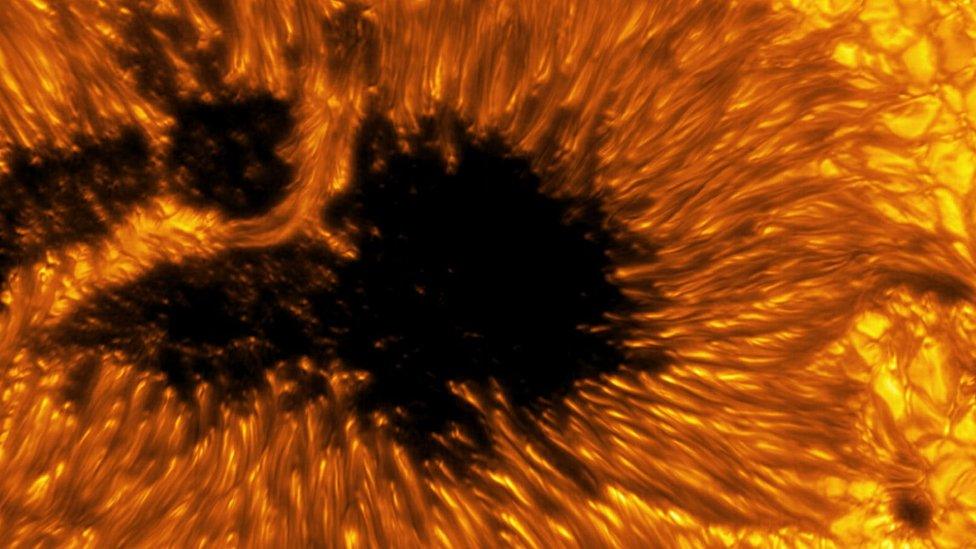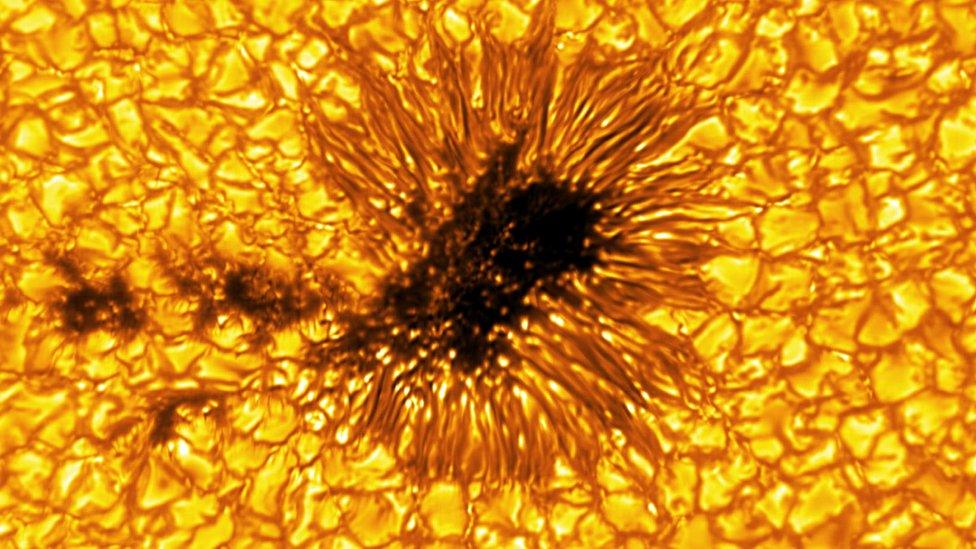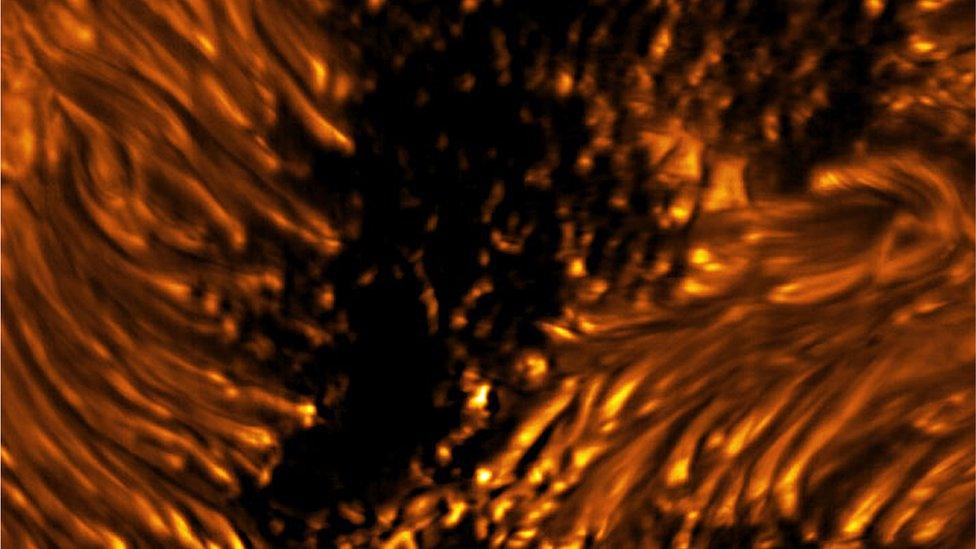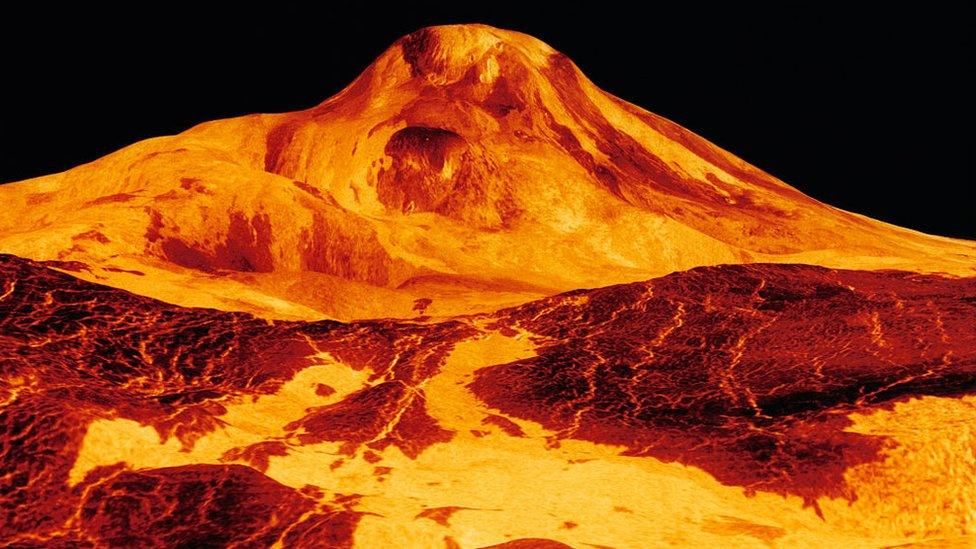Check out these amazing close-up images of the Sun
- Published
- comments

This image shows umbral dots are the dots which are the orange specks you can see in the dark spaces while the penumbral filaments are the bright strands
You might be fooled into thinking these are some cool images of sunflowers, but they're actually close-up images of the Sun.
They were taken by the National Science Foundation's (NSF) Daniel K. Inouye Solar Telescope - the world's most powerful ground-based telescope.
It's hoped detailed images like this will help solar scientists understand the Sun's magnetic field and what causes solar storms.
The pictures show both sun spots and quieter regions on the Sun's surface but what does that mean?

Here's another sun spot - the dark area. It's been captured in a really rare state which is the end phase of its evolution
What is a sunspot?
Sunspots are dark regions that appear on the Sun's surface and they can be as big as a planet like Earth!
They appear to be darker because they are cooler than other regions on the Sun's surface and are formed by magnetic fields, while Solar flares are a sudden explosion of energy.
This sort of activity influences the outermost layer of the Sun too - called the heliosphere - and this can impact Earth in various ways.
That's why scientists monitor the Sun's surface so closely every day, and images like these can help their research and understanding of the star.
The Inouye Solar Telescope is found on the island of Maui, Hawaii.

This image shows complex cell structures of the Sun
Scientists are going to use these images to understand more about the Sun's magnetic field and the possible causes of solar storms.
These images are part of a wider National Science Foundation mission and they'll be capturing more detailed images like this in the future.
The foundation said: "As the Inouye Solar Telescope continues to explore the Sun, we expect more new and exciting results from the scientific community - including spectacular views of our solar system's most influential celestial body."
- Published29 May 2023

- Published23 May 2023

- Published7 May 2023

